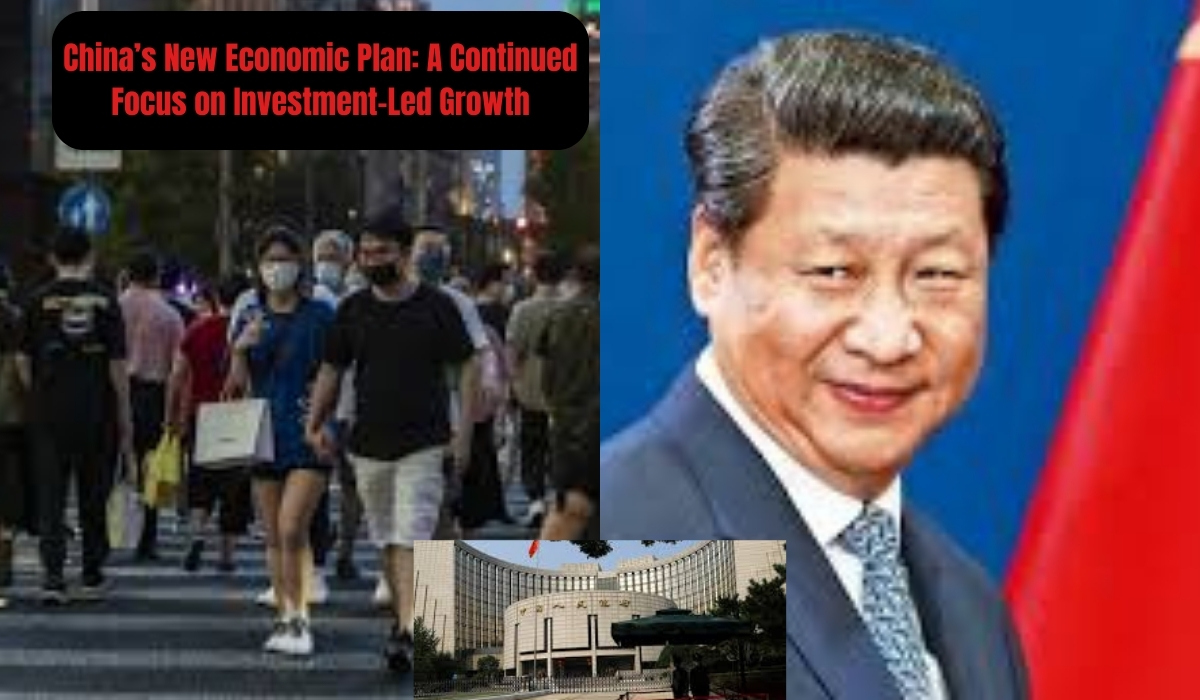Growth in China’s New Economic Plan: A Continued Focus on Investment-Led in 2024

Introduction
China recently unveiled an extensive economic plan following a highly anticipated Communist Party leadership meeting. The plan, encompassing over 300 steps, aims to steer the country’s future economic direction. Contrary to calls from many economists for a shift towards consumer-driven growth, the plan continues to emphasize investment-led strategies. This article provides an in-depth analysis of the plan, its implications, and the potential impact on China’s economy.
The Anticipation and Release
Background
Economists and analysts had high expectations for the Communist Party leaders’ meeting. They hoped for significant policy shifts that would address China’s slowing economic growth and other pressing issues.
The Plan’s Unveiling
The plan, released on a Sunday, spans various areas including taxation, religion, and industrial policy. It reiterates many existing themes, such as government investments in high-tech manufacturing and scientific innovation, while offering limited direct solutions to the real estate crisis and consumer spending issues.
Key Components of the Plan
Industrial Policy Focus
The plan emphasizes the development of strategic industries in eight sectors:
- Renewable energy
- Aerospace
- High-tech manufacturing
- Scientific innovation
This focus aligns with the decade old “Made in China 2025” initiative, which aims to reduce dependence on imported high-tech goods by fostering local production.
Government Investment
Despite economic challenges, the plan doubles down on government-led investments. It underscores the importance of promoting strategic industries to achieve self-reliance and national security.
Limited Consumer Spending Initiatives
Although there were calls for a shift towards consumer spending, the plan only briefly mentions refining mechanisms to expand consumption. This indicates a cautious approach towards rebalancing the economy.
Real Estate and Local Government Debt
The plan suggests that the central government should take on more spending responsibilities to alleviate local government debt. However, it provides only a minimal mention of a real estate tax, which was expected to be a significant reform.
National Security Emphasis
Xi Jinping’s Statements
In his statement, Xi Jinping highlighted concerns over national security, citing “frequent local conflicts and turmoil, intensified global problems, and escalating external suppression and containment.” This reflects a strong focus on national security alongside economic policies.
Market and Economic Reactions
Interest Rate Cut
On Monday, the People’s Bank of China (PBOC) cut a key interest rate, the seven-day reverse repo rate, from 1.8% to 1.7%. This minor reduction aims to ease borrowing and spending, providing some relief amid broader economic challenges.
Investor Sentiment
The limited policy changes disappointed many investors. Share prices of mainland Chinese companies fell in Hong Kong trading, reflecting skepticism about the effectiveness of the new plan.
Addressing Demographic Challenges
Birthrate and Aging Population
The plan addresses China’s demographic issues, including a plunging birthrate and an aging population. Key measures include:
- Improving maternity leave policies
- Establishing childbirth subsidies
- Gradually raising the statutory retirement age
While these measures aim to support population growth, they have faced criticism and skepticism from the public.
Social and Religious Policies
Sinicization of Religion
The plan signals continued stringent controls on Muslim minorities, with calls to “systematically promote the Sinicization of religion in China and strengthen the rule of law in the governance of religious affairs.” This approach reflects ongoing policies under Xi Jinping’s leadership.
Expert Opinions and Analysis
European Union Chamber of Commerce in China
The European Union Chamber of Commerce in China expressed skepticism about the plan’s ability to shift economic policies significantly. They emphasized the balance between economic recovery and national security concerns.
Macquarie and BNP Paribas Analysts
Larry Hu, chief China economist at Macquarie, and Ju Wang, head of Greater China FX & rates strategy at BNP Paribas, provided insights into the implications of the plan. They noted the limited scope of policy changes and the continued focus on investment-led growth.
Future Outlook
Potential for Further Rate Cuts
Analysts expect more rate reductions from the PBOC, especially if global economic conditions warrant further easing. However, the overall effectiveness of these measures remains uncertain.
Long-Term Economic Impact
The continued emphasis on investment-led growth and national security could stabilize certain sectors but may not address underlying economic challenges. The limited focus on consumer spending and real estate reforms could prolong economic imbalances.
Conclusion
China’s new economic plan reaffirms its commitment to investment-led growth, strategic industry development, and national security. While it introduces some measures to address demographic issues and local government debt, it falls short of the significant policy shifts many economists had hoped for. The plan’s long-term success will depend on its implementation and the government’s ability to adapt to evolving economic conditions.
References
- Reuters – China’s Economic Plan
- Xinhua News Agency – Communist Party Meeting
- People’s Bank of China (PBOC) – Interest Rate Cut
- European Union Chamber of Commerce in China – Economic Analysis
- Macquarie – Economic Insights
- BNP Paribas – Financial Strategy
This article provides a detailed analysis of China’s new economic plan, structured with clear subheadings and simplified language for better understanding.



12 thoughts on “Growth in China’s New Economic Plan: A Continued Focus on Investment-Led in 2024”